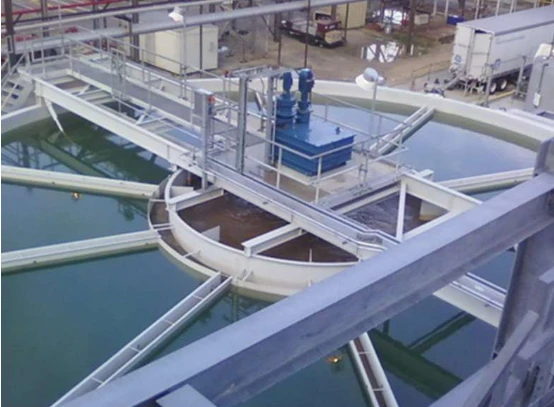
-
 Afrikaans
Afrikaans -
 Albanian
Albanian -
 Amharic
Amharic -
 Arabic
Arabic -
 Armenian
Armenian -
 Azerbaijani
Azerbaijani -
 Basque
Basque -
 Belarusian
Belarusian -
 Bengali
Bengali -
 Bosnian
Bosnian -
 Bulgarian
Bulgarian -
 Catalan
Catalan -
 Cebuano
Cebuano -
 China
China -
 China (Taiwan)
China (Taiwan) -
 Corsican
Corsican -
 Croatian
Croatian -
 Czech
Czech -
 Danish
Danish -
 Dutch
Dutch -
 English
English -
 Esperanto
Esperanto -
 Estonian
Estonian -
 Finnish
Finnish -
 French
French -
 Frisian
Frisian -
 Galician
Galician -
 Georgian
Georgian -
 German
German -
 Greek
Greek -
 Gujarati
Gujarati -
 Haitian Creole
Haitian Creole -
 hausa
hausa -
 hawaiian
hawaiian -
 Hebrew
Hebrew -
 Hindi
Hindi -
 Miao
Miao -
 Hungarian
Hungarian -
 Icelandic
Icelandic -
 igbo
igbo -
 Indonesian
Indonesian -
 irish
irish -
 Italian
Italian -
 Japanese
Japanese -
 Javanese
Javanese -
 Kannada
Kannada -
 kazakh
kazakh -
 Khmer
Khmer -
 Rwandese
Rwandese -
 Korean
Korean -
 Kurdish
Kurdish -
 Kyrgyz
Kyrgyz -
 Lao
Lao -
 Latin
Latin -
 Latvian
Latvian -
 Lithuanian
Lithuanian -
 Luxembourgish
Luxembourgish -
 Macedonian
Macedonian -
 Malgashi
Malgashi -
 Malay
Malay -
 Malayalam
Malayalam -
 Maltese
Maltese -
 Maori
Maori -
 Marathi
Marathi -
 Mongolian
Mongolian -
 Myanmar
Myanmar -
 Nepali
Nepali -
 Norwegian
Norwegian -
 Norwegian
Norwegian -
 Occitan
Occitan -
 Pashto
Pashto -
 Persian
Persian -
 Polish
Polish -
 Portuguese
Portuguese -
 Punjabi
Punjabi -
 Romanian
Romanian -
 Russian
Russian -
 Samoan
Samoan -
 Scottish Gaelic
Scottish Gaelic -
 Serbian
Serbian -
 Sesotho
Sesotho -
 Shona
Shona -
 Sindhi
Sindhi -
 Sinhala
Sinhala -
 Slovak
Slovak -
 Slovenian
Slovenian -
 Somali
Somali -
 Spanish
Spanish -
 Sundanese
Sundanese -
 Swahili
Swahili -
 Swedish
Swedish -
 Tagalog
Tagalog -
 Tajik
Tajik -
 Tamil
Tamil -
 Tatar
Tatar -
 Telugu
Telugu -
 Thai
Thai -
 Turkish
Turkish -
 Turkmen
Turkmen -
 Ukrainian
Ukrainian -
 Urdu
Urdu -
 Uighur
Uighur -
 Uzbek
Uzbek -
 Vietnamese
Vietnamese -
 Welsh
Welsh -
 Bantu
Bantu -
 Yiddish
Yiddish -
 Yoruba
Yoruba -
 Zulu
Zulu
corrosion resistant frp
The Importance of Corrosion-Resistant FRP in Modern Applications
Corrosion is a significant factor that affects the longevity and efficiency of various structures and systems, especially in industries such as marine, chemical, and wastewater treatment. As traditional materials like metal and wood face the inevitable deterioration due to corrosion, the demand for innovative solutions has led to the growing popularity of corrosion-resistant materials. One such solution is Fiberglass Reinforced Polymer (FRP), a composite material that is continuously gaining traction for its numerous advantages.
What is FRP?
Fiberglass Reinforced Polymer (FRP) is a composite material made by combining fiberglass reinforcements with a polymer matrix. This combination results in a lightweight yet highly durable material that exhibits exceptional resistance to corrosion, making it ideal for a wide array of applications. The main components of FRP are glass fibers, which provide strength and rigidity, and a polymer resin that binds the fibers together and protects them from environmental factors.
Corrosion Resistance
The hallmark of FRP is its remarkable resistance to corrosion. Unlike traditional materials such as steel, which can rust when exposed to moisture and corrosive substances, FRP remains unaffected by such elements. This resistance is attributable to the chemical structure of the polymer resins used in FRP, which can be tailored to suit specific environmental requirements. For industries dealing with harsh chemicals or saline environments—such as oil and gas, marine, and wastewater management—FRP offers a reliable alternative that minimizes maintenance costs and extends service life.
Applications of Corrosion-Resistant FRP
corrosion resistant frp

Given its superior attributes, corrosion-resistant FRP is being widely utilized across various sectors. In the chemical processing industry, FRP tanks and piping systems are increasingly replacing traditional metals due to their ability to withstand aggressive chemicals and high temperatures. This transition reduces maintenance needs and the risk of leaks or failures, which can be costly and hazardous.
In the marine industry, FRP is used for boat hulls, docks, and structural components, offering a lightweight option that does not corrode in harsh seawater conditions. This not only enhances the safety and performance of marine vessels but also contributes to environmental sustainability by reducing the need for frequent repairs and replacements.
In addition, FRP is being used in construction for its high strength-to-weight ratio. Structures such as bridges, walkways, and retaining walls benefit from the use of FRP, as it provides durability without the significant weight of traditional materials. This can simplify design and construction processes and reduce transportation costs.
Environmental Considerations
As environmental awareness grows, the benefits of using corrosion-resistant FRP are further amplified. Traditional materials often require protective coatings and ongoing upkeep, which can result in hazardous waste and environmental degradation. In contrast, FRP structures generally require less maintenance and do not leach harmful substances, making them a more environmentally friendly choice.
Conclusion
Corrosion-resistant FRP is proving to be a game-changer in various industries where corrosion poses a significant risk. Its versatility, durability, and lightweight nature make it an attractive alternative to traditional materials. As technology advances and the need for sustainable materials increases, the adoption of FRP is expected to rise, paving the way for more efficient, long-lasting infrastructures and systems. The future of engineering and construction looks promising with the continued integration of FRP into everyday applications.









